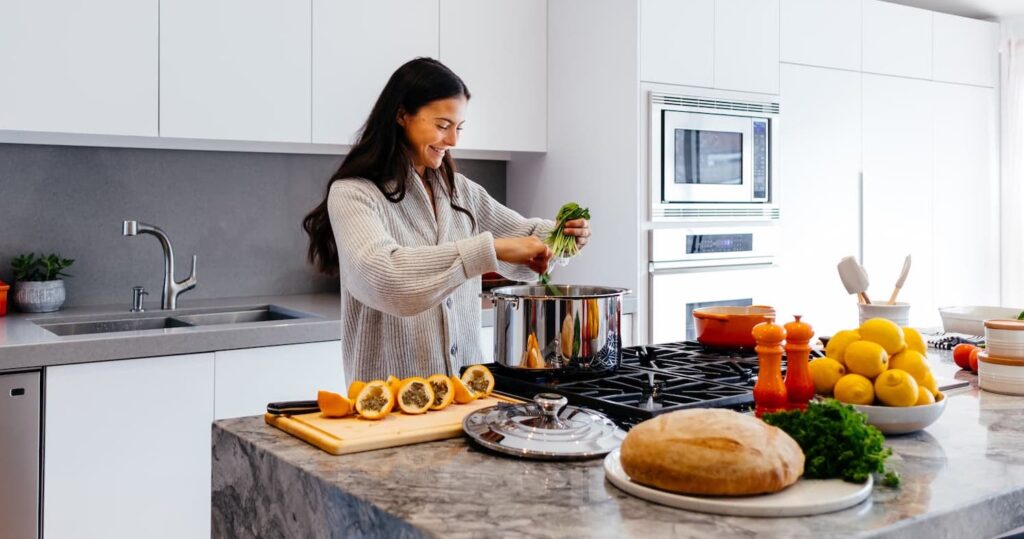
Building a custom home is a dream that some individuals and families feel is out of reach. The opportunity to design a living space that perfectly suits your lifestyle and preferences, although attractive to most people, assumptions surrounding certain aspects make it a path sometimes untaken.
There are several myths and misconceptions surrounding the process of building a custom home that often deter potential homeowners from pursuing this option. In this blog, we will debunk the top five myths about building a custom home, providing you with valuable insights and expert advice to help you make informed decisions when embarking on your custom home construction project.
Myth 1: Building a Custom Home is More Expensive than Buying an Existing Home
One of the most common misconceptions when it comes to custom home building is that it is significantly more expensive than buying an existing home. While it is true that building a custom home involves upfront costs, it is important to consider the long-term benefits.
Custom homes are built with energy-efficient materials and modern construction techniques, which can result in lower utility bills and maintenance costs in the long run. Additionally, the ability to customize the design and choose the materials allows you to control the budget and prioritize your spending based on your preferences and needs.
Myth 2: Building a Custom Home is a Lengthy and Complicated Process
Another custom home buying myth is that the process is excessively lengthy and complicated. Constructing a custom home does require careful planning and coordination but working with an experienced architect and builder can streamline the process.
From the initial design phase to obtaining permits and construction, professionals can guide you through each step, ensuring efficiency and adherence to timelines.
With proper planning and communication, the construction of a custom home can be a smooth and enjoyable experience.
Myth 3: Custom Homes Lack Resale Value
Some individuals believe that custom homes have limited resale value due to their unique designs and features.
However, this is a misconception. In fact, custom homes can be highly desirable in the real estate market, as they are often built with high-quality materials and tailored to meet the needs of the homeowner.
A well-designed custom home can attract potential buyers who appreciate the attention to detail and unique elements. Additionally, custom homes tend to age well, as they are built with modern construction standards and are often equipped with the latest technologies and energy-efficient features.
Myth 4: Custom Homes are Only for the Wealthy
It is a general assumption that building a custom home is a luxury reserved for the wealthy, however, this is not the case. While there are certainly high-end custom homes, the cost of building a custom home can be tailored to fit various budgets.
By working closely with your architect and builders, you can prioritize your needs and allocate your budget accordingly. Moreover, there are financing options available specifically for custom home construction, allowing more individuals and families to turn their dream homes into a reality.
Myth 5: Custom Homes Take Away Flexibility in the Future
A prevalent misconception is that building a custom home limits flexibility in the future. Some worry that they will be stuck with a design that may not suit their changing needs or preferences over time. However, custom homes offer ample flexibility when it comes to future modifications and renovations.
With careful planning and a forward-thinking approach, you can design your custom home to accommodate potential changes or expansions in the future. By incorporating adaptable spaces or leaving room for future additions, you can ensure that your home remains flexible and can evolve as your needs evolve.
Get in Touch
Building a custom home is an exciting and rewarding process, but it is also a route that many homeowners don’t consider due to the myths and misconceptions surrounding it. Contrary to popular belief, custom homes can be a cost-effective option, offer a streamlined construction process, have excellent resale value, accommodate various budgets and provide flexibility for the future.
If you’re considering building a custom home and want expert advice throughout the process, contact your local G.J. Gardner Homes store. With their experience in custom home building, they can address any concerns you have surrounding costs and processes. Stop letting myths and misconceptions hold you back from creating your dream custom home, work with the G.J. Gardner Homes professionals for a successful and fulfilling custom home building experience today.














